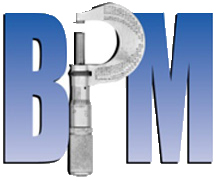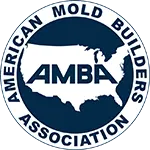CLASSIFICATION OF INJECTION MOLDS
From the Society of Plastics Industry
Moldmakers Division
GENERAL NOTES
The following classifications are guidelines to be used in obtaining quotations and placing orders for a uniform type of mold. It is our desire through these classifications, to help even out inequities in the plastic molding quote system and eliminate customer disappointment.
It is strongly recommended that mold drawings be obtained before construction is started on any injection mold. Even though parts may seem simple enough to not warrant a mold design, in the event of mold damage a drawing showing sizes and steel types will pay for itself.
These classifications are for mold specifications only, and in no way guarantee workmanship. Workmanship is an individual and intangible thing. It is very important that purchasing agents deal with vendors whose workmanship standards and reliability have been well proven.
Mold life, because of variations in part design and molding conditions, cannot be guaranteed. We will attempt to give approximate cycles for each type of mold excluding wear caused by material abrasion, poor mold maintenance, improper molding technique, and inherent design factors.
Maintenance is not the responsibility of the mold maker. Normal maintenance such as replacement of broken springs, broken ejector pins, worn rings, or the rework of nicks and scratches should be closely considered when deciding which classification of mold is required.
This document does not constitute a warranty or guarantee by the Society of the Plastic Industry, Inc., or its members for the classifications or specifications set forth herein.
TYPE I UNIT INSERT
(i.e. MUD)
- Detailed mold design required.
- Insert retainer to be uniform hardness of at least 280 BHN or (29 R/C).
- All molding and/or functional details are to be made of tool steel hardened to at least 48 R/C.
- Slide wear plates are recommended.
- Temperature control provisions to be in cavities, cores, and slides where feasible.
- Molding details should be plated for protection unless stainless steel is used.
- Electroless nickel-plating of all water channels is recommended.
- Parting line locks are required.
- Insert retainers must have leader pins and bushings or some similar guidance system.
- It is recommended that the entire insert retainer be electroless nickel-plated, parkerized or in some similar way protected from rust or corrosion.
TYPE II UNIT INSERT
(i.e. MUD)
- Detailed mold design recommended.
- Insert retainer to be uniform hardness of at least 165 BHN (4 R/C).
- Cavities and cores must be 280 BHN (29 R/C) or higher.
- All other extras are optional.
TYPE III UNIT INSERT
(i.e. MUD)
- Can be constructed from aluminum, cast metal, cast epoxy or any material with sufficient strength to produce at least 500 injection-molded pieces.
(Important: Refer to the general specifications to complete the details of this section, except for prototype molds.)
TYPE I UNIT INSERT**
*Cycles: Approximately 500,000
Description: Top quality materials for medium to high production requirements.
TYPE II UNIT INSERT**
*Cycles: Under 100,000
Description: Similar to Type 104 Mold. Most commonly used insert. Low to medium production.
TYPE III UNIT INSERT**
*Cycles: Less than 500
Description: Similar to Type 105 Mold. Least expensive insert for very limited quantities. Insert built with the least expensive materials.
**When buying inserts, the customer buys only the insert. The molder owns the unit mold base. Because of the large variation in insert sizes, it should be kept in mind that it might be impossible to have product produced by another vendor without having to purchase a unit mold base.
(Important: Refer to the general specifications to complete the details of this section, except for prototype molds.)
*Cycles are approximate and for comparison only.
GUIDE FOR PURCHASER
CLASSIFICATIONS OF INJECTION MOLDS UP TO 400 TONS
This section contains a brief synopsis of the various mold classifications. The following section contains detailed descriptions of each mold class. It is our recommendation that a “mold quote specification” sheet be included with each request for quotation. A reproducible specification sheet is in the back cover.
TYPE 101 MOLD
*Cycles: One Million or more
Description: Built for extremely high production. This is the highest price mold and is made with only the highest quality materials.
TYPE 102 MOLD
*Cycles: Not exceeding one million
Description: Medium to high production mold, good for abrasive materials and/or parts requiring close tolerances. This is a high quality, fairly high price mold.
TYPE 103 MOLD
*Cycles: Under 500,000
Description: Medium production mold. This is a very popular mold for low to medium production needs. Most common price range.
TYPE 104 MOLD
*Cycles: Under 100,000
Description: Low production mold. Used only for limited production preferably with non-abrasive materials. Low to moderate price range.
TYPE 105 MOLD
*Cycles: Not exceeding 500
Description: Prototype only. This mold will be constructed in the least expensive manner possible to produce a very limited quantity of prototype parts.
*Cycles are approximate and for comparison only
GUIDE FOR MANUFACTURER
MOLD INFORMATION CLASSIFICATIONS OF INJECTION MOLDS
Note: In this section the attempt has been made to detail the materials and the processes to be used in producing the various classifications of molds.
GENERAL SPECIFICATIONS
- Customer to approve mold design prior to start of construction.
- All molds, with the exception of prototype, to have adequate channels for temperature control.
- Wherever feasible, all details should be marked with steel type and Rockwell hardness approximately .005 deep.
- Customer name, part number, and mold number should be steel stamped on all molds and/or inserts.
- All molds should have eyebolt holes on the topside. There should be one on both sides of the parting line to facilitate mold removal, if required, in halves.
TYPE 101 MOLD
- Detailed mold design required.
- Mold base to be minimum hardness of 280 BHN (29 R/C).
- Molding surfaces (cavities & cores) must be hardened to a minimum 50 R/C. All other details, such as slides, heel blocks, gibs, wedge blocks, etc. should also be of hardened tool steels.
- Ejection should be guided.
- Slides must have wear plates.
- Temperature control provisions to be in cavities, cores and slide cores whenever possible.
- Electroless nickel-plating of all water channels is recommended. This greatly inhibits the chance of rust and makes it easy to clear sediment from plugged lines.
- Parting line locks are required on all molds.
TYPE 102 MOLD
- Detailed mold design recommended.
- Mold base to be minimum hardness of 280 BHN (29 R/C).
- Molding surfaces should be hardened to at least 48 R/C.
- All other details such as slides, heel blocks, gibs, wedge blocks, etc. should be of hardened tool steels and heat-treated likewise.
- Temperature control provisions to be directly in the cavities, cores, and slides wherever possible.
- Parting line locks are recommended for all molds.
- The following items may or may not be required depending on the ultimate production quantities anticipated. It is recommended that the items desired be checked and made a firm requirement for quoting purposes:
- Guided Ejection
- Slide Wear Plates
- Plated Temperature Control Channels
- Plated Cavities
TYPE 103 MOLD
- Detailed mold design recommended.
- Mold base must be minimum hardness of 165 BHN (4 R/C).
- Cavity and cores must be 280 BHN (29 R/C) or higher. (Usually P-20, option hardened steels)
- All other extras are optional.
TYPE 104 MOLD
- Mold design recommended.
- Mold base can be of mild steel or aluminum.
- Cavities can be aluminum, mild steel or any other agreed upon metal.
- All other extras are optional.
TYPE 105 MOLD
- May be constructed from cast metal, epoxy or any other material offering sufficient strength to produce minimum prototype pieces.

